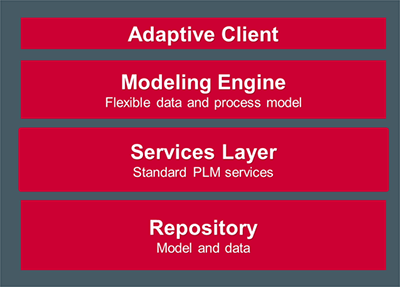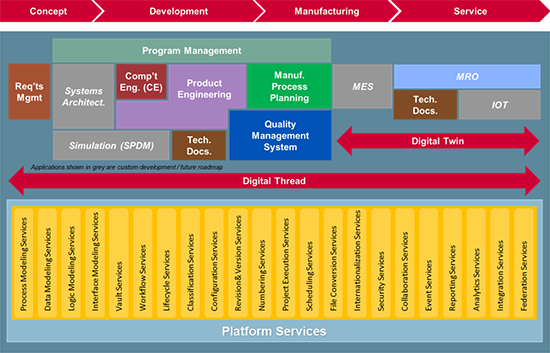Key takeaways:
- The Aras PLM Platform is redefining customization in the PLM market; the days of worrying about the potential impact on upgradeability are disappearing.
- The platform’s ability to deploy quickly with real-time customization of predefined best practice applications is a key market differentiator; it is engineered to be highly customized.
- The platform’s architecture has been designed to protect investment and ensure future adaptability; it is engineered to be sustainable.
- Upgrades are performed by Aras specialists at no extra cost as part of the Aras subscription.
Introduction
For several years, the Aras Corporation (Aras) has included no-cost version-to-version upgrades in their enterprise subscriptions, independent of how the solution has been customized and implemented. This is a rather bold guarantee given the historic challenges the industry has experienced with upgrading highly customized PLM deployments. In 2014, when this commentary was originally published, CIMdata felt it appropriate to find out how Aras’ guarantee was playing out. We discovered that there was much more to the story than just a contractual guarantee. Fundamentally, the Aras PLM Platform is engineered to be highly configurable—even customizable—without resulting in expensive, complex and time-consuming version-to-version upgrades and re-implementations. Today, with more than 1,100 upgrades completed by Aras, we have updated this commentary to reacquaint and update the PLM community on this feature of the Aras offering.
As definers, defenders, and champions of the PLM industry CIMdata, along with most of the industry, has traditionally defined configurability (or tailorability) as the ability to adjust and/or define the behavior of a PLM solution in a manner that carries forward to the next-released version of the software solution without re-configuration. Defined this way, configurability is a good thing; many would in fact say it is a highly desirable attribute of a robust PLM solution. Whereas the industry has traditionally defined customization as a bad thing, because it frequently requires re-implementation of customizations with each subsequent upgrade; usually a costly and time-consuming effort that CIMdata and almost all PLM solution providers recommend be avoided. But with the Aras PLM Platform this appears to no longer be the case. Could this be a true innovation, a PLM solution that is highly customizable to satisfy specific business requirements without causing negative side effects? A solution where you could easily and extensively customize its look and feel, data model, and even operational behavior without worrying about feature loss during the upgrade process? The simple answer is Yes; a more detailed answer follows.
The Innovation Behind the Aras PLM Platform
Like most innovations, the Aras architecture started with a simple, yet elegant main design concept; one based on, as Aras calls it, a “model-based SOA enterprise application framework.” At its core, the Aras PLM Platform is an object-oriented, web-based solution that relies on a service-oriented architecture (SOA) with a behavioral modeler that provides a graphical drag-and-drop environment that enables real-time system definitions and alterations that do not require complex programming. Modifications to the Aras PLM Platform are made in real-time by editing the model definition directly without the need to even restart the system. By contrast, application modifications in traditional architectures require developers to edit source code, compile, link, and then deploy to make the necessary application changes and enhancements, which can take weeks or even months to implement.
By supporting solution model modification in real-time, the Aras PLM Platform allows changes to be implemented on a live system. The solution’s behavioral modeler stores the XML solution models (e.g., object model, relationships, business logic, and methods) as normalized data structures in the database, separate from the underlying web services framework (see Figure 1).

Figure 1—Aras PLM Platform Architecture
(Courtesy of Aras)
Figure 2 illustrates the range of applications and platform services available out-of-the-box with Aras. The applications can be modified and extended using the graphical model editor and simple forms. Users can develop their own applications from scratch. The application models in turn subscribe to web services found in the Services layer. When a new version or service pack is released by Aras, the Services layer can be upgraded without impacting the XML models residing at the higher level. Since there is no implementation-specific business logic in the Services layer, all business logic is made available and is customizable within the modeling environment; upgrades do not require code changes to the solution models.

Figure 2—Aras PLM Platform Applications and Services
(Courtesy of Aras)
It is important to note that the platform’s behavioral modeler is not a data modeler with scripts running beside it. Instead the XML model is executed directly by the solution’s SOA run-time engine. Aras has no middle abstraction layer of code that defines and/or interrupts business rules between the user interface layer and the database layer, which is important for a number of reasons. Not only does this result in a higher level of configurability, it also results in a leaner code stack than that found in most comprehensive PLM solutions. (Aras reports fewer than one million lines of code exist in the current release.) A benefit of the leaner stack is that it allows the database to be directly optimized since it precisely represents the business logic, thereby making scalability solely a database issue. To date, Aras reports that 3rd-party lab run performance and scalability tests of over 250,000 concurrent users with significant potential to go much higher based on the availability of the appropriate hardware configuration to support the increased database traffic.
Another benefit of the behavioral modeler is that Aras can run a more efficient development organization with fewer people; the organization doesn’t have to upgrade, move, and test as much source code between releases as many of its competitors. This means that Aras can more quickly develop, test, and deliver solution enhancements to its customers, thereby enabling them to rapidly enhance their PLM capabilities.
Aras customers, many of whom speak at Aras’ multiple annual user events, report that Aras’s unique architecture (among PLM solutions) has saved them time and eliminated the need to make core system changes to implement complex customizations. They also report that this approach results in a rapid and rather effortless system definition; one that adapts to changing business requirements simply, continuously, and without the headaches of typical code-based customization paradigms. Aras customers also report that the architecture enables the rapid implementation of business-specific solutions either from scratch, or when starting with the predefined applications that are available to the Aras community. They also report that forms, workflows, relationship structures, business rules, and data model schema can be rapidly customized while the system is running to support even complicated business requirements.
Finally, it is important to note that the guaranteed upgrade of a highly customized PLM solution is not only possible, but is in fact commonplace among Aras subscribers. Many report that the upgraded database is typically returned from Aras within two weeks. Aras says the technical part of the upgrade generally takes a few hours, with the remaining time consumed with validation testing. Customers still need to validate integrations and perform their own acceptance testing.
As stated, Aras has completed over 1,100 upgrades since the inception of the program and, in a recent 12-month period, upgraded half of their customers, all without any loss of previous customization or integration done to the platform. This places Aras in a special position that merits investigation both by companies searching to overlay or replace an existing PLM solution and by those looking to implement one for the first time.
Conclusion
Aras’ secret is out, and many industrial companies are taking advantage of the Aras PLM Platform’s ability to support extensive customization while avoiding upgrade issues. Aras customers have found that the platform’s modeling capabilities and predefined best-practice applications enable solutions to be developed quickly using an Agile methodology, and configuration and customization while the solution is running enable fast deployment. The solution’s ability to be upgraded without causing time and money to be spent on re-implementing customizations is impressive, and those looking for a highly customizable PLM solution should take note. For companies that have already embraced Aras, the solution’s elegance is in its simplicity and in the fact that it is possible to upgrade without a penalty for customization. The follow-on impacts are significant, and for many of Aras’ customers there is a lot more value to come. The Aras PLM Platform’s architecture is not just highly customizable, it is also highly sustainable. The days of missing or significantly delaying upgrades have potentially ended. The Aras PLM Platform is a robust solution with a high degree of resilience to business and technology changes, thereby protecting a company’s short- as well as long-term PLM investment, ensuring future adaptability, and contributing to a reduced total cost of ownership. To answer our earlier question as to whether or not the Aras PLM Platform could be a true innovation, significantly customizable to satisfy business requirements without causing negative side effects, the answer is a resounding Yes.




